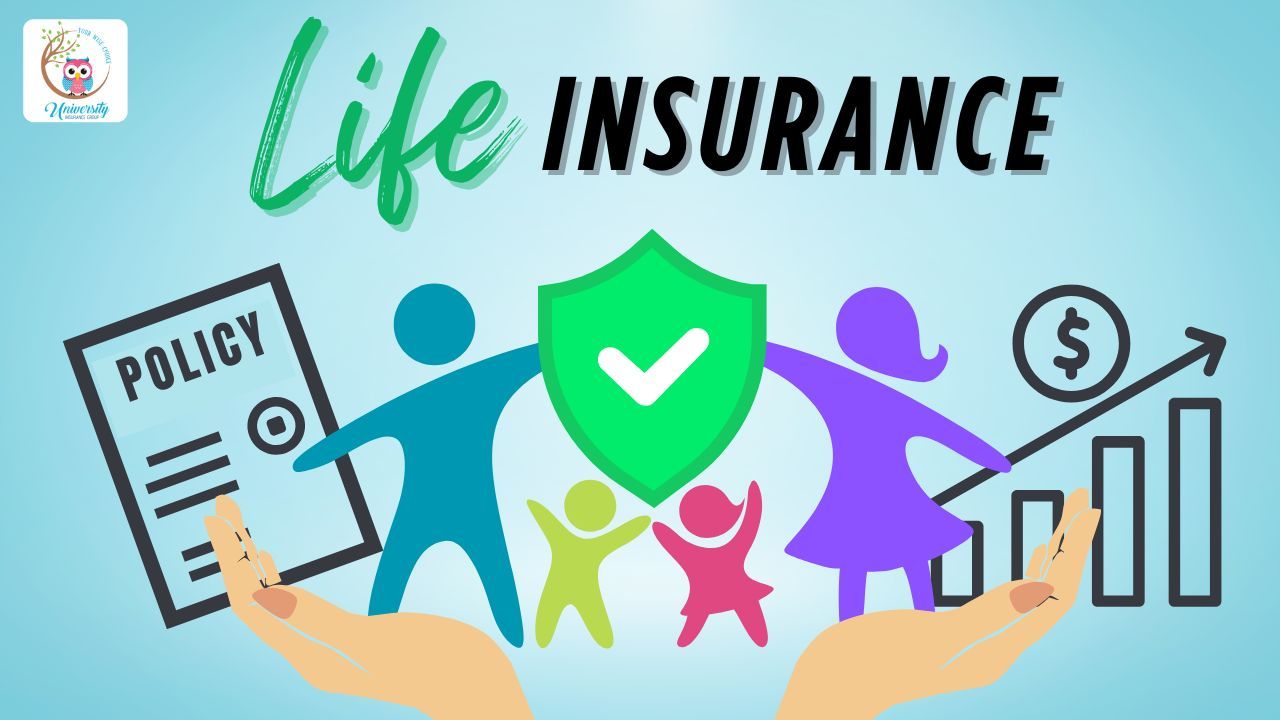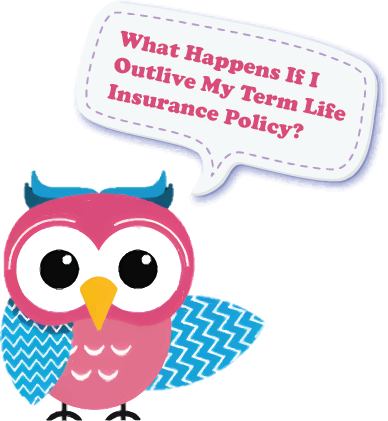University Insurance Group April 2025 Newsletter

- Life Insurance Myths
- Steering clear of damaging potholes
- National Pet Health Insurance Day
- Recipes to keep Easter simple and easy
- And many more.


Life Insurance:
Myths That Could Cost You
Life insurance is one of those topics that often gets put off until “someday.” Unfortunately, myths and misconceptions can lead people to make decisions—or worse, no decision at all—that could leave their loved ones financially vulnerable. Let’s break down some of the most common myths that might be standing in the way of securing the proper coverage.
Myth #1: Life Insurance Is Only for Older People
Many believe Life Insurance is something to think about later in life, but the truth is, the earlier you get coverage, the better. Younger, healthier individuals typically secure lower premiums, making it a smart financial move to lock in rates early. Plus, unexpected events can happen at any age, and having a policy in place ensures your loved ones are financially protected no matter what.
Myth #2: It’s Too Expensive
A common misconception is that Life Insurance is costly, but many policies are surprisingly affordable. The cost depends on factors like age, health, and coverage amount, but there are options for nearly every budget. Term life insurance, for example, can offer significant coverage at a lower cost than many expect.
Myth #3: I Have Coverage Through Work, So I Don’t Need More
While employer-provided Life Insurance is a great benefit, it often isn’t enough. Many workplace policies provide only one to two times your annual salary, which may not be sufficient to cover long-term financial needs like mortgage payments, children’s education, or other debts. Plus, if you change jobs, you may lose your coverage entirely.
Myth #4: Stay-at-Home Parents Don’t Need Life Insurance
Even if someone doesn’t earn an income, their role has significant financial value. If a stay-at-home parent were
to pass away, the surviving partner might need to pay for childcare, household help, or other services. Life Insurance can help cover these costs and provide financial stability during a difficult time.
Myth #5: It’s Too Late to Get Life Insurance
While it’s true that younger individuals typically get lower rates, it’s never too late to explore your options. Many insurance providers offer policies for people well into their later years, and some coverage is available even with pre-existing health conditions. The key is to find a plan that fits your needs and budget.
Making the Right Choice
The biggest mistake regarding Life insurance is assuming you don’t need it. Understanding the facts can help you make informed decisions to protect those that matter most. If you’re unsure about your options, at University Insurance Group, we’re here to help you get the proper protection. Contact us to learn more about Life Insurance.

Pothole Season: How to Protect Your Car and Your Wallet
Spring brings warmer weather, blooming flowers — and a surge in potholes. These hidden road hazards, formed by winter’s freeze-thaw cycles, can do serious damage to your vehicle. In 2021 alone, pothole-related repairs cost U.S. drivers $26.5 billion, with the average repair running around $400 per incident.
With an estimated 55 million potholes across the country in 2024 — more than 13 per mile — chances are you’ll encounter one. Here’s what you need to know about typical pothole damage and how your auto insurance may help.
Potholes may seem like minor road nuisances, but they can cause significant damage to your vehicle. Here are the most common issues to watch out for:
- Tires and wheels - Blowouts, bent rims, and cracked wheels. Even a small pothole can weaken your tires, increasing the risk of a flat.
- Suspension and alignment - Uneven tire wear and poor handling. A hard hit can throw your alignment off, making steering more difficult.
- Steering system - Damage that affects vehicle control. Sudden jolts can impact your steering components, reducing your ability to drive safely.
Does Insurance Cover Pothole Damage?
Not all insurance policies cover pothole-related damage, so it’s important to know what protection you have before an unexpected repair bill.
- Collision coverage - Typically covers pothole damage after your deductible. If the impact is severe, this coverage may help cover repair costs.
- Comprehensive coverage - Does not cover pothole damage. Since hitting a pothole is considered a collision, comprehensive insurance won’t apply.
- Claim considerations - If repair costs are close to your deductible, paying out of pocket might be better to avoid a premium increase. Always weigh the cost of repairs against potential rate hikes before filing a claim.
How to Avoid Pothole Trouble
A few simple precautions can help you dodge pothole-related damage and keep your vehicle in top shape.
- Stay alert and avoid puddles (which may hide potholes). What looks like a small puddle could be a deep, wheel-damaging crater.
- Maintain proper tire pressure to absorb shocks. Underinflated tires are more vulnerable to pothole damage, so check them regularly.
- Slow down — hitting a pothole at high speed causes more damage. A cautious driving speed gives you more time to react.
- Report potholes to your local municipality for repairs. Fixing problem spots benefits everyone on the road.
If you hit a pothole, have your vehicle checked out by a reputable mechanic as soon as possible to prevent further issues.
Potholes are unavoidable, but you can minimize the damage with smart driving and the right coverage. Have questions about your auto policy this spring? Give me a call. That’s why I’m here!
A few simple precautions can help you dodge pothole-related damage and keep your vehicle in top shape.
Stay alert and avoid puddles (which may hide potholes). What looks like a small puddle could be a deep, wheel-damaging crater.
Maintain proper tire pressure to absorb shocks. Underinflated tires are more vulnerable to pothole damage, so check them regularly.
Slow down — hitting a pothole at high speed causes more damage. A cautious driving speed gives you more time to react.
Report potholes to your local municipality for repairs. Fixing problem spots benefits everyone on the road.
If you hit a pothole, have your vehicle checked out by a reputable mechanic as soon as possible to prevent further issues.
Potholes are unavoidable, but you can minimize the damage with smart driving and the right coverage. Have questions about your auto policy this spring? Give UIG a call. That’s why we're here!
April Article Round-Up
We’ve rounded up several articles from around the web that are particularly helpful this time of year. Enjoy!
- Heard of the “Everything Closet?” It just might be the answer to your home storage woes.
- The absolute best purchases to make in April — and what to skip.
- DIY outdoor games that pair perfectly with your next BBQ.
- Make-ahead recipes to make Easter Sunday brunch look oh-so-easy.

Welcome to Wise-Lee Shared! Each month, we tackle the most common insurance questions to keep you informed and confident about your coverage. Have a question you've been wondering about? We’ve got the answers—because insurance shouldn’t be a mystery!
For this month's question, Chris asks:

Chris, a 45-year-old father of two, bought a 20-year term life insurance policy when he was 30. Now that his policy is nearing expiration, he wonders what happens next.
He calls his insurance agent, who explains his options:
- Renew the Policy: Chris can extend his coverage, but his premiums will be much higher since he’s older.
- Convert to a Permanent Policy: Before the term ends, he may be able to switch to a whole life policy without a medical exam. This keeps his coverage intact, though at a higher cost.
- Buy a New Policy: If he’s still in good health, he could apply for a new term policy, but he’ll need to go through the underwriting process again.
- Go Without Coverage: If his kids are grown, debts are paid, and he has enough savings, he may no longer need life insurance.
After reviewing his situation, Chris decides to convert a portion of his policy to whole life insurance to ensure lifelong coverage while keeping costs manageable.

Mark Your Calendar!
- April 7: National Pet Health Insurance Day emphasizes the importance of insuring pets to manage unexpected veterinary expenses. Pet insurance can cover a range of services, from routine check-ups to emergency surgeries, providing peace of mind for pet owners.
- April 10: National Siblings Day honors and appreciates the only people who can truly understand what growing up in your home was like. It's a fun chance to connect, share memories, or plan a slightly competitive activity together.
- April 12: National Grilled Cheese Sandwich Day celebrates the classic comfort food — the grilled cheese sandwich. The grilled cheese sandwich gained popularity in the U.S. during the 1920s with the advent of affordable sliced bread and cheese.
- April 15: Tax Day - Remember, filing taxes on time helps avoid penalties and ensures compliance with federal regulations.
- April 17: National High Five Day - Did you know the high five originated in the sports world in the 1970s? It has since become a universal gesture of celebration.
- April 20: Easter Sunday - Many observe this day by attending church services, enjoying festive meals, and participating in community events like Easter egg hunts.
- April 22: Earth Day - A global event - promoting environmental protection and sustainability. Participate by joining local clean-up efforts, planting trees, or committing to reducing your carbon footprint.


That's all Folks!
Thanks for reading this month's newsletter.
If you have any insurance needs, questions, or concerns, please reach out.
We are here to help.
Related Articles
Related Articles
All Rights Reserved | University Insurance Group | Privacy Policy | Terms of Use


